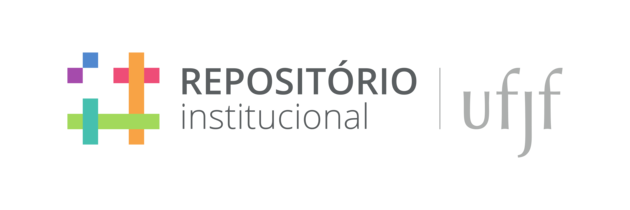https://repositorio.ufjf.br/jspui/handle/ufjf/18232| File | Description | Size | Format | |
|---|---|---|---|---|
| vitordasilvabotelho.pdf | 1.31 MB | Adobe PDF |  View/Open | |
| vitordasilvabotelho-produtoeducacional.pdf | 772.83 kB | Adobe PDF |  View/Open |
| DC Field | Value | Language |
|---|---|---|
| dc.contributor.advisor1 | Matos, José Manuel Leonardo de | - |
| dc.contributor.advisor1Lattes | http://lattes.cnpq.br | pt_BR |
| dc.contributor.referee1 | Oliveira, Maria Cristina Araújo de | - |
| dc.contributor.referee1Lattes | http://lattes.cnpq.br/7741687012644966 | pt_BR |
| dc.contributor.referee2 | Valente, Wagner Rodrigues | - |
| dc.contributor.referee2Lattes | http://lattes.cnpq.br/0648590779429965 | pt_BR |
| dc.creator | Botelho, Vítor da Silva | - |
| dc.creator.Lattes | http://buscatextual.cnpq.br | pt_BR |
| dc.date.accessioned | 2025-02-21T13:18:49Z | - |
| dc.date.available | 2025-02-19 | - |
| dc.date.available | 2025-02-21T13:18:49Z | - |
| dc.date.issued | 2024-08-12 | - |
| dc.identifier.uri | https://repositorio.ufjf.br/jspui/handle/ufjf/18232 | - |
| dc.description.abstract | This text presents the results of a study conducted in the field of History of Mathematics Education, supported by the framework of cultural history as well as by studies that address specific knowledge for the teaching profession. These studies are approached with the aim of establishing surveys about the school algebra that is present in Ottoni's Elements of Algebra compendium. In addition, the Couto Ferraz reform, contemporary to the launch of Ottoni's compendiums, is discussed, together with the author's biography, with a view to presenting the historical and social context in which the work is inserted. Regarding the analysis carried out, mathematical contents and the didactic options of the books are discussed, such as, for example, the exercises, synthesis procedures such as the “general rule”, definitions, among others. The chapters considered are: “Operations with polynomials and first-degree problems”, “Elementary theory of the greatest common divisor”, “The impasse in solving problems with negative numbers”, “Impossible and indeterminate problems”, “Solving second-degree problems” and “Applications of algebra”. What supports the choices of these themes is that, in these spaces, detailed discussions were found, often different from those presented in contemporary books, making them capable of fostering the elaboration of conjectures in the context of the History of Mathematics Education regarding the following questions: What didactic alternatives does the work use to present the algebraic content? What characteristic of the subject School Algebra is present in the work compiled by Ottoni? Answering these questions refers to the objective of the research, which is to describe the organization of School Algebra in the book Elements of Algebra. In view of this survey, similar aspects and ruptures existing between the works compiled by Ottoni are addressed, in order to deal with the teaching of Algebra in the time frame between 1852 and 1893, the period that includes the first and last edition found for the development of the present analysis. | pt_BR |
| dc.description.resumo | O presente texto aponta resultados de uma pesquisa realizada no âmbito da História da Educação Matemática, amparada pelo referencial da história cultural bem como pelos estudos que versam sobre os saberes específicos para a profissão de ensino. Tais estudos são abordados com o objetivo de estabelecer levantamentos acerca da álgebra escolar que se faz presente no compêndio Elementos de Álgebra de Ottoni. Além disso, discute-se a reforma Couto Ferraz, contemporânea ao lançamento dos compêndios de Ottoni, juntamente com a biografia do autor, tendo em vista apresentar o contexto histórico e social em que a obra está inserida. No que se refere à análise realizada, são discutidos conteúdos matemáticos e as opções didáticas dos livros, como, por exemplo, os exercícios, procedimentos de síntese como a “regra geral”, definições, entre outros. Os capítulos considerados são: “Operações com polinômios e problemas do 1° grau”, “Teoria elementar do maior divisor comum”, “O impasse na resolução de problemas com números negativos”, “Problemas impossíveis e indeterminados”, “Resolução de problemas do segundo grau” e “Aplicações da álgebra”. O que ampara as escolhas desses temas é que, nesses espaços, foram encontradas discussões detalhadas e, por muitas vezes, distintas das postas nos livros contemporâneos, fazendo-os capazes de fomentar elaborações de conjecturas no âmbito da História da Educação Matemática acerca dos questionamentos: De quais alternativas didáticas a obra lança mão para apresentar o conteúdo algébrico? Que característica da disciplina Álgebra escolar está presente na obra compilada por Ottoni? Responder tais questionamentos remete ao objetivo de pesquisa, que é descrever a organização da Álgebra escolar no livro Elementos de Álgebra. Diante deste levantamento são tratados aspectos similares e rupturas existentes entre as obras compiladas por Ottoni, para assim tratar do ensino de Álgebra no marco temporal compreendido entre 1852 e 1893 período que compreende a primeira e a última edição encontradas para desenvolvimento da presente análise. | pt_BR |
| dc.language | por | pt_BR |
| dc.publisher | Universidade Federal de Juiz de Fora (UFJF) | pt_BR |
| dc.publisher.country | Brasil | pt_BR |
| dc.publisher.department | ICE – Instituto de Ciências Exatas | pt_BR |
| dc.publisher.program | Programa de Pós-graduação em Educação Matemática | pt_BR |
| dc.publisher.initials | UFJF | pt_BR |
| dc.rights | Acesso Aberto | pt_BR |
| dc.rights | Attribution 3.0 Brazil | * |
| dc.rights.uri | http://creativecommons.org/licenses/by/3.0/br/ | * |
| dc.subject | Álgebra | pt_BR |
| dc.subject | Compêndios | pt_BR |
| dc.subject | Saberes | pt_BR |
| dc.subject | História cultural | pt_BR |
| dc.subject | Algebra | pt_BR |
| dc.subject | Compendiums | pt_BR |
| dc.subject | Knowledge | pt_BR |
| dc.subject | Cultural history | pt_BR |
| dc.subject.cnpq | CNPQ::CIENCIAS EXATAS E DA TERRA | pt_BR |
| dc.title | A álgebra escolar nos elementos de álgebra de Cristiano Ottoni (segunda metade do século XIX) | pt_BR |
| dc.type | Dissertação | pt_BR |
| Appears in Collections: | Mestrado Profissional em Educação Matemática (Dissertações) | |
This item is licensed under a Creative Commons License

